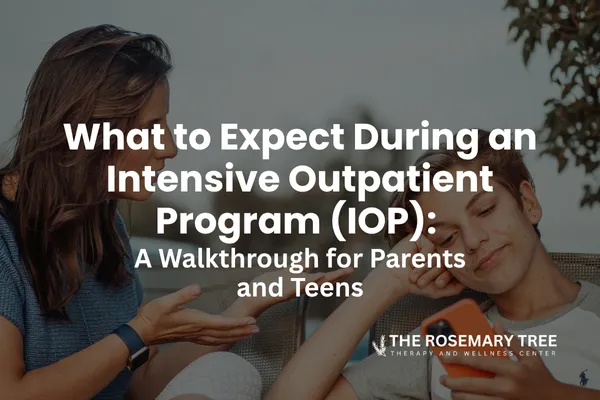
What to Expect During an Intensive Outpatient Program (IOP): A Walkthrough for Parents and Teens
Introduction: Why Knowing the Daily Routine Matters
Starting an Intensive Outpatient Program (IOP) can feel daunting if you don’t know what lies ahead. Understanding the structure and activities of an adolescent IOP helps both parents and teens feel more at ease and prepared for the journey. Here’s a clear breakdown of what typically happens in a week at an IOP designed for teens.
Program Length and Structure
Most adolescent IOPs run for eight to twelve weeks, meeting multiple days a week after school. The program follows weekly themes that focus on personal goals, emotional regulation, interpersonal skills, and stress management. Each session blends group therapy, individual check-ins, skill-building exercises, and creative activities, ensuring comprehensive care.
Daily and Weekly Schedule
A typical week includes three sessions, usually in the late afternoon. Each session lasts about three hours:
Group Check-In: Every day begins with a check-in. Teens share how they’re feeling, set intentions, and discuss any immediate concerns. This helps therapists gauge emotional states and provides a supportive forum for peers.
Skills Training or Theme Work: Sessions often feature psychoeducation or skill-building modules. Teens might learn Dialectical Behavior Therapy (DBT) techniques, practice mindfulness, or explore topics aligned with the week’s theme—like self-esteem, resilience, or communication.
Group Connection Activities: Facilitated activities encourage teens to practice new skills in real-time, build social connections, and support one another through shared challenges.
Creative or Experiential Therapy: Sessions frequently incorporate expressive arts, nature walks, and games. These activities allow teens to explore emotions non-verbally, connect with others, and experience therapy in a fun, engaging way.
Reflection or Weekend Planning: At the end of each week, teens may participate in reflection exercises—such as journaling or cold exposure sessions—and discuss goals for the upcoming week or weekend.
Therapeutic Activities: Group, Individual, and Skills Training
Group therapy is the core of an adolescent IOP. In a small, supportive setting, teens share experiences, practice coping strategies, and build empathy with peers facing similar struggles. Each participant is also assigned an individual therapist who meets with them regularly for personalized sessions and helps guide their progress. Skill-building components teach practical tools for managing emotions, handling stress, and improving relationships—empowering teens to apply what they learn beyond the therapy room.
Creative and Experiential Therapy
Adolescent IOPs often integrate creative modalities to engage teens in a hands-on way. Weekly sessions may feature:
Art Therapy: Guided drawing, painting, or sculpting exercises help teens express emotions they might not yet have words for.
Nature-Based Therapy: Outdoor walks and nature-inspired activities provide a calming environment and foster mindfulness.
Animal-Assisted Therapy: Interaction with therapy animals, like a bunny or a visiting dog, can reduce stress and provide comfort.
Play and Movement: Games, sports, and physical activities encourage teamwork, improve mood, and build trust among group members.
Mindfulness and Breathwork: Guided breathing exercises and meditation help teens learn to regulate their nervous systems and stay grounded.
These activities offer alternative ways to process emotions and build self-awareness, making therapy feel less like a chore and more like a meaningful experience.
Family Involvement and Support
Parents are a crucial part of the healing process. Many programs invite families to participate weekly, alternating between parent-only skill groups and joint family sessions. These meetings provide parents with tools to support their teens, improve communication, and address family dynamics that may affect recovery. Ongoing updates and meetings with the clinical team help families stay informed and engaged.
What Teens Can Expect and How It Feels
New participants often feel nervous before their first session, but IOPs are designed to be welcoming and inclusive. Teens typically find a community of peers who “get it” and a team of therapists who combine professionalism with authenticity and warmth. Activities are varied and interactive, so even reluctant teens often look forward to sessions once they experience the supportive environment.
Conclusion: Preparing for Success
Knowing the structure and expectations of an Intensive Outpatient Program can make the decision to enroll much easier. IOPs provide a blend of therapy, education, creativity, and family involvement—empowering teens to build skills, gain insight, and connect with others in a safe space. If you’re considering this level of care, use this overview to help your family prepare and approach the experience with confidence.
